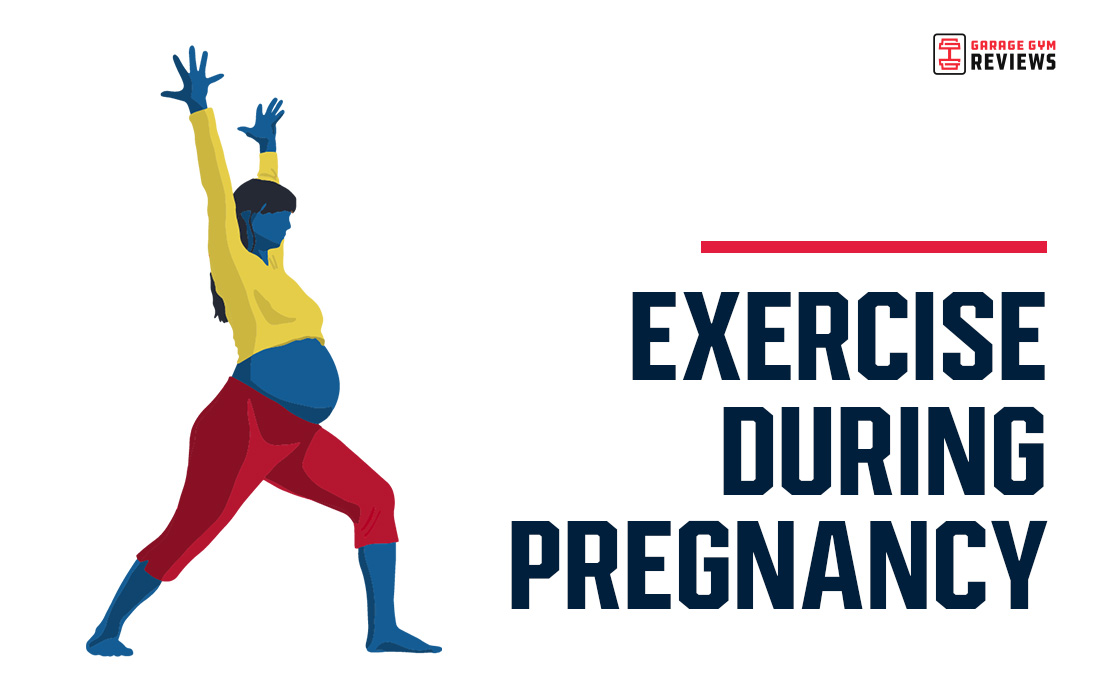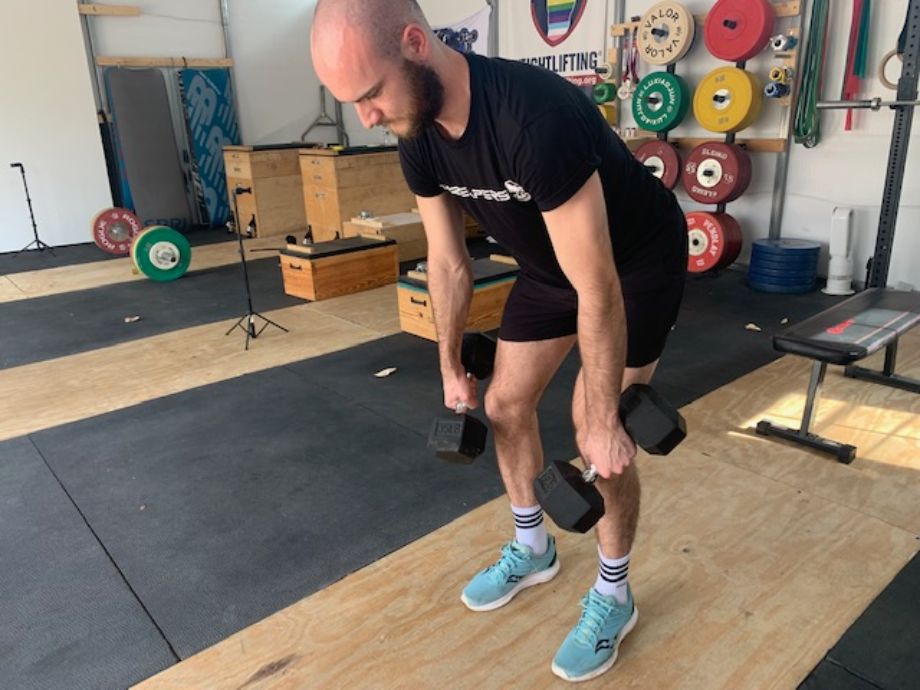This article was medically reviewed by Kecia Gaither, double board-certified physician in OB/GYN and Maternal Fetal Medicine, with expert commentary from GGS Certified Pre & Post Natal Coach, Rachel MacPherson.
Exercise during pregnancy may prevent pregnancy complications, prepare your body for labor, and give you strength and endurance for life with a growing family. If you’ve already got a form of exercise you love, chances are you can continue to do it (slightly modified) throughout your pregnancy.
It’s important to incorporate both strength and cardio elements into your workouts. However, when it comes down to it, consistency is your greatest ally. Exercising during pregnancy doesn’t come without a few risks and discomforts. Your body is changing almost daily. Any pregnancy complications may put limits on what you can do. However, the vast majority of pregnant people can safely work out until their delivery day.

Is Exercise During Pregnancy Safe?
Yes, exercise is safe in a normal, healthy pregnancy. Continued scientific research has shown that exercise benefits both mother and baby, lowering the risk of gestational diabetes and excessive weight gain and helping manage anxiety and depression. The American College of Obstetricians and Gynecologists (ACOG) states that there’s little credible evidence to severely limit activity during pregnancy in most cases.
However, talk to your healthcare provider. They may recommend exercise limits if you have a high-risk pregnancy or have had:
- Cervical issues
- Preeclampsia
- Placenta previa
- High blood pressure (hypertension)
- Preterm labor in your current or previous pregnancies
- Heart disease
- Vaginal bleeding
- Fainting or dizziness
- Shortness of breath or rapid heart rate
- Fetal complications
If you don’t currently have a regular exercise program, start slowly so you don’t injure yourself. If you already have an established routine, keep it going and modify things as your pregnancy progresses. During the second and third trimesters, you may need to try different exercises or modify your current workouts to accommodate a changing body.
“During the first trimester, you can usually exercise much the same as you have been before pregnancy. However, you likely will need to monitor your fatigue levels a little more and be kind to yourself if you need to take the intensity down a notch,” says certified prenatal/postpartum coach Rachel MacPherson.
“As pregnancy progresses, you’ll likely need to modify or stop some exercises altogether,” Rachel cautions. For instance, she explains that having difficulty correctly bracing your core will mean heavier weights can become unsafe and you may feel too much pressure in your abdominal wall or pelvic floor.
“It’s best to focus on form and careful execution of each movement since heavier weights and balance can become safety concerns as you grow and your center of gravity shifts,” Rachel explains. Always consult your doctor before starting any exercise routine. Your doctor knows your medical history and can advise you on the amount and types of exercise that are safe for you.
Always consult your doctor before starting any exercise routine. Your doctor knows your medical history and can advise you on the amount and types of exercise that are safe for you.
Benefits Of Exercise During Pregnancy
Exercise during pregnancy has plenty of health benefits that will make your pregnancy, labor and delivery, and postpartum period easier to manage. Studies consistently show that you and your baby will benefit from keeping active during pregnancy.
“By keeping active throughout pregnancy, you can expect shorter labor, reduced risk of preterm birth, fewer birth complications, and speedier recovery time,” Rachel says.
Here are some of the top benefits of exercising during pregnancy.
Prevents And Reduces Back Pain
Backaches are common during pregnancy. As you move into the late second trimester and early third trimester, the lower back may start to bow to accommodate weight gain and distribution. In fact, low back and pelvic pain are two of the most common complaints during pregnancy. This pain can impact your ability to work, walk, sleep, and reduce quality of life.
Exercise strengthens your muscles to support your growing body. Research shows that regular exercise, including core stability work, improves outcomes, reducing low back pain during and after pregnancy.
Prevents Excess Weight Gain
Weight gain during pregnancy is healthy and normal. However, excess weight gain can contribute to the development of gestational diabetes and increase the chances of preterm labor and Cesarean birth. Use exercise to support a healthy weight range.
Lowers Blood Sugar For Those With Gestational Diabetes
Gestational diabetes can cause complications that put both mother and baby at risk. Exercise reduces the risk of developing gestational diabetes and helps control blood sugar levels in those who have diabetes.
Prevents, Reduces, And Helps Manage Anxiety And Depression
The endorphins released during exercise can help manage anxiety and depression, both pre– and postnatal. While exercise alone may not keep these mental health conditions from developing, exercise is a valuable preventative and management tool for pregnant women.
Reduces Chances Of Preterm Birth
Many of the benefits of exercise, from managing gestational diabetes to preventing extra weight gain, reduce the chances of preterm labor.
Reduces Recovery Time
A strong healthy body recovers better (and faster) from labor. In the case of an uncomplicated labor, exercise can also help the mother to have the energy needed to care for herself and the baby postpartum.
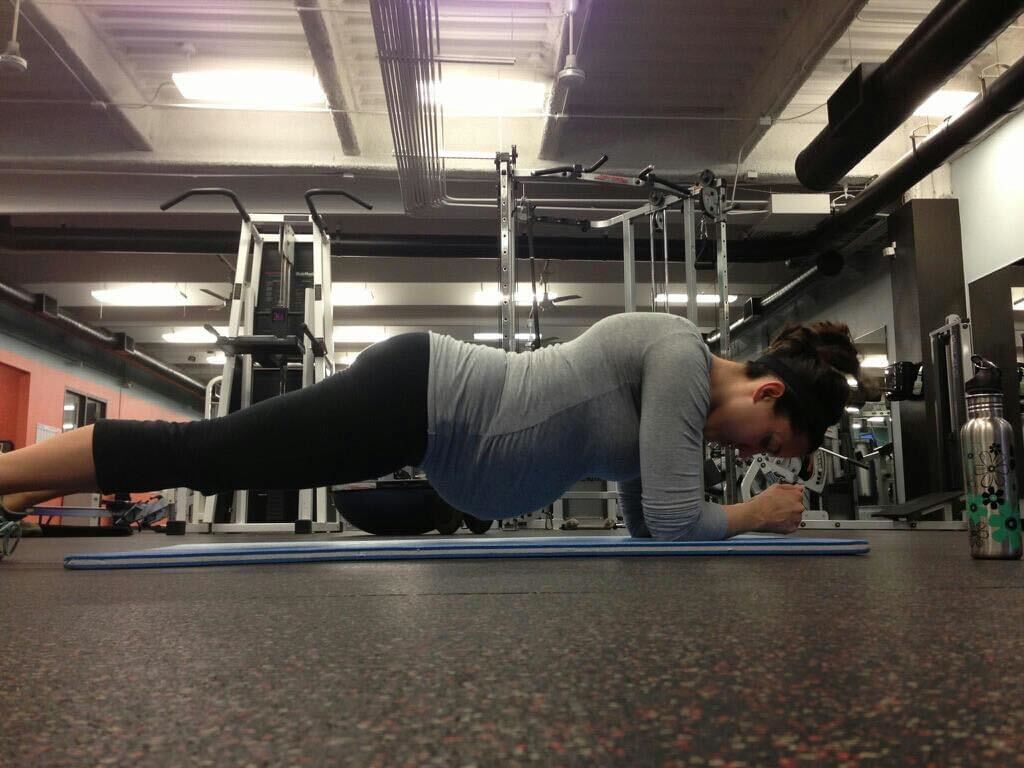
Cardio Workouts For Pregnancy
Cardio workouts keep your heart healthy and build your endurance, which you’ll need during pregnancy, labor, and the postpartum period. Labor and delivery require a fair amount of stamina, which is improved through aerobic exercise. Stationary bikes, walking, swimming, and light aerobics (including water aerobics) are excellent options.
If you were accustomed to more intense forms of cardio before pregnancy, you can still incorporate those training sessions into your programming. “It’s fine to do high-intensity cardio throughout your pregnancy, so long as your doctor approves. In fact, it could increase the likelihood of carrying to term and poses no health risks for healthy individuals,” Rachel explains.
Stationary Bike
Stationary bikes are an excellent way to raise your heart rate without putting too much strain on your joints, which pregnancy hormones can make less stable.
- Start at an easy resistance level for a 5-minute warmup.
- Jump into an interval workout by increasing the resistance by 2 or 3 levels for 1 to 2 minutes then returning to your warm-up resistance level for 1 to 2 minutes.
- Continue this pattern until you’ve exercised for 30 minutes.
Modifications: You can also add dumbbell bicep curls or tricep extensions to increase the difficulty. Stick to a stationary bike as you move into the third trimester because changes in your center of balance can make it easy to fall off of a road bike.
Walking
Walking is a classic exercise for just about everyone, pregnant or not. It’s a low-impact aerobic activity, and you can adjust your route and tempo to accommodate a growing belly.
- Hit the hills when you want a more challenging workout, or keep it to the flats when you’re low on energy. Try to walk for a total of 30 minutes a few times per week.
Swimming
This low-impact exercise gives your joints, ligaments, and tendons a break from the weight of an expanding uterus. You can swim laps, take a water aerobics class, or walk in the pool with water weights.
Prenatal Exercise Classes (Yoga, Zumba, Spin)
Exercise classes, especially those designed specifically for the prenatal period, add variety and a social element to exercise. Even non-prenatal classes like Zumba can be a great way to work out as long as you’re prepared to make your own modifications if necessary.
Strength Workouts For Pregnancy
Labor takes some serious strength and endurance, and strength training prepares your body for those demands. Dumbbells, resistance bands, and cable machines are great ways to keep and build muscle. Even workouts like prenatal yoga and pilates can provide gentle strength training and stretching.
A word of caution—most pregnant people should skip heavy weightlifting and save it for postpartum. Your center of gravity changes almost daily during the later stages of pregnancy and the hormone relaxin starts flowing, both of which can increase instability and increase the chances of injury.
“If you have been strength training for a while and you have a coach, you can carefully use heavier weights, so long as you can control them and you don’t experience any sensations of bulging in your abdomen or pelvic floor,” Rachel says. It’s always best to get approval from your doctor along the way.
If you’re new to strength training, try these exercises.
Table Top Pose
- Get on all fours on a yoga or exercise mat. (Your hands should be directly beneath your shoulders with the knees directly beneath your hips.)
- Take a deep breath, as you exhale, contract your abdominal muscles, and straighten your back.
- Hold the contraction (but not your breath) for 15 to 30 seconds and release.
- Repeat to complete a set of 10.
Modifications: Lengthen or shorten the hold time to accommodate your fitness level and belly size. As your baby grows, you may not be able to contract your muscles for as long.
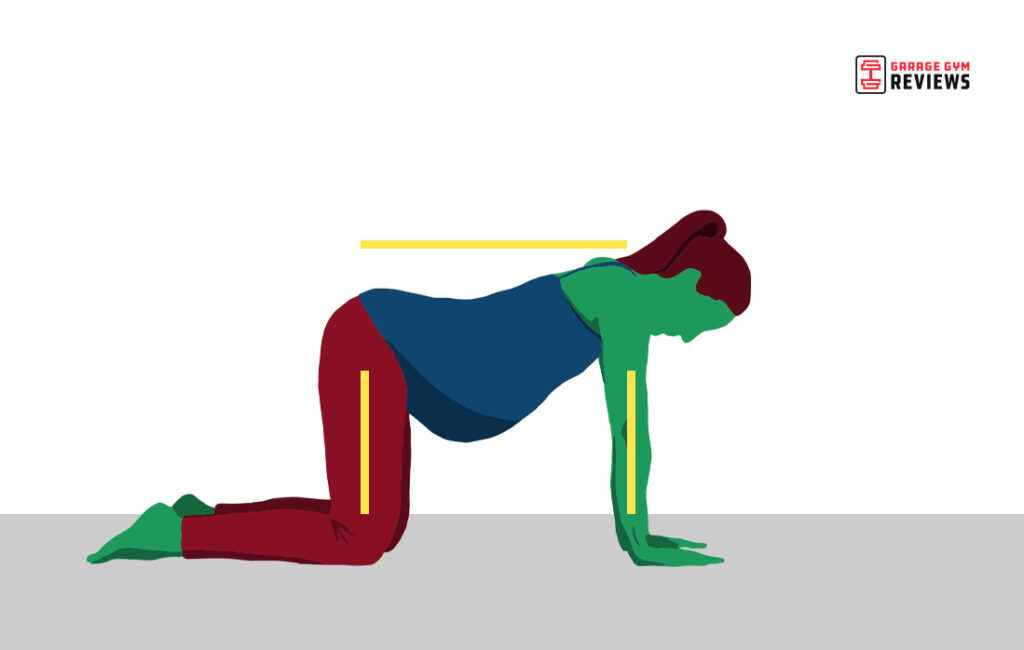
Resistance Band Bicep Curls and Tricep Extensions
Bicep Curls
- Sit in a chair.
- Step on one end of the resistance band with your right foot and hold the other end in your right hand, adjusting the length by wrapping the resistance band around your hand until you reach a tension that feels moderately challenging.
- Keep your elbow tucked at your side as you perform a bicep curl by bringing your hand toward your chest.
- Slowly bring your hand back to the starting position. (Slow movements maintain tension on the muscle during the eccentric portion of the exercise, increasing the benefits.)
- Do 3 sets of 10 reps on each arm.
Modifications: You can perform this exercise with your closed palm facing your body or use a neutral grip by keeping the closed palm facing inward with the thumb at the top.
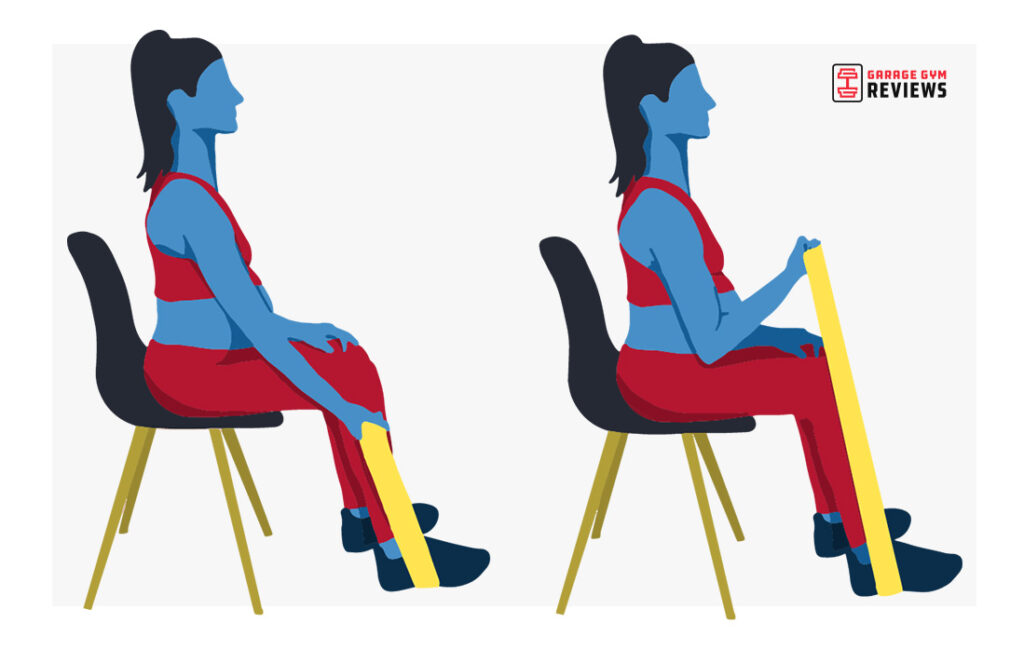
Tricep Extensions
- Sit in a chair.
- Grasp one end of your resistance band in each hand.
- Place one hand behind your back near your waist, with the back of the hand against the spine.
- Place the other hand behind your head, keeping your elbow pointed toward the ceiling.
- Raise the hand that’s behind your head, keeping the elbow steady, until your hand points toward the sky.
- Slowly lower this hand to maintain tension on the eccentric portion of the exercise.
- Do 3 sets of 10 reps on each arm.
Modifications: Use a thicker or shorter resistance band to increase the resistance.
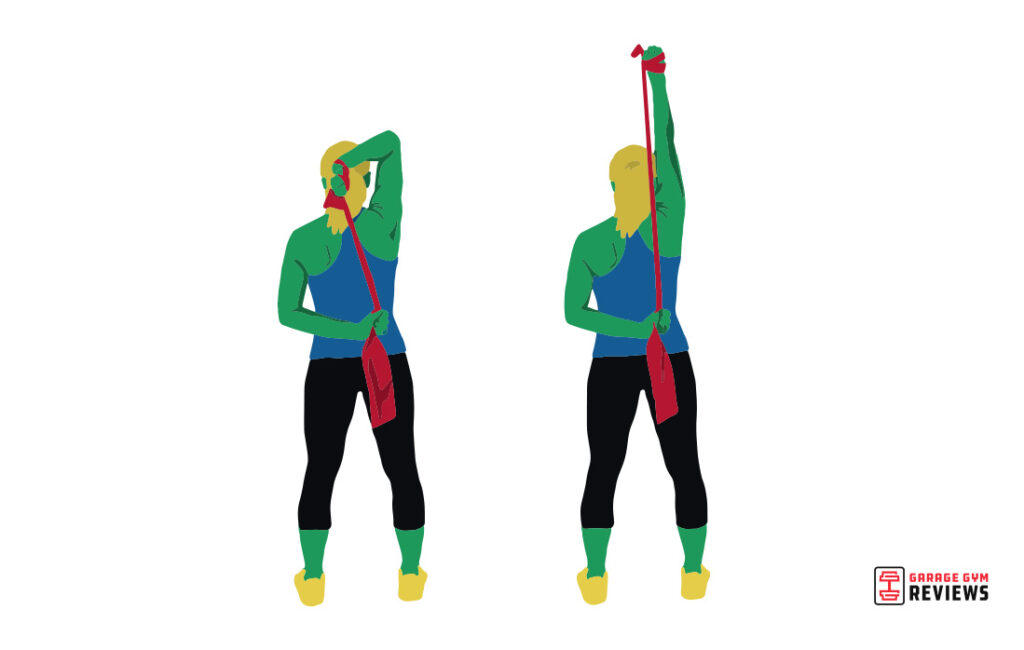
Standing Pelvic Tilt
- Stand against a wall with your heels touching the wall.
- Breathe in while tucking your tailbone under and pulling your belly button toward your spine, tightening your abdominal muscles until you feel the small of your back touch the wall.
- Hold for five seconds.
- Slow exhale and release to the starting position.
- Repeat this exercise 10 times.
Modifications: Try adding a Kegel on each repetition. When you contract your abdominals, also contract your pelvic floor and release them when you release the tilt. You can also do this exercise sitting on a chair or exercise ball.
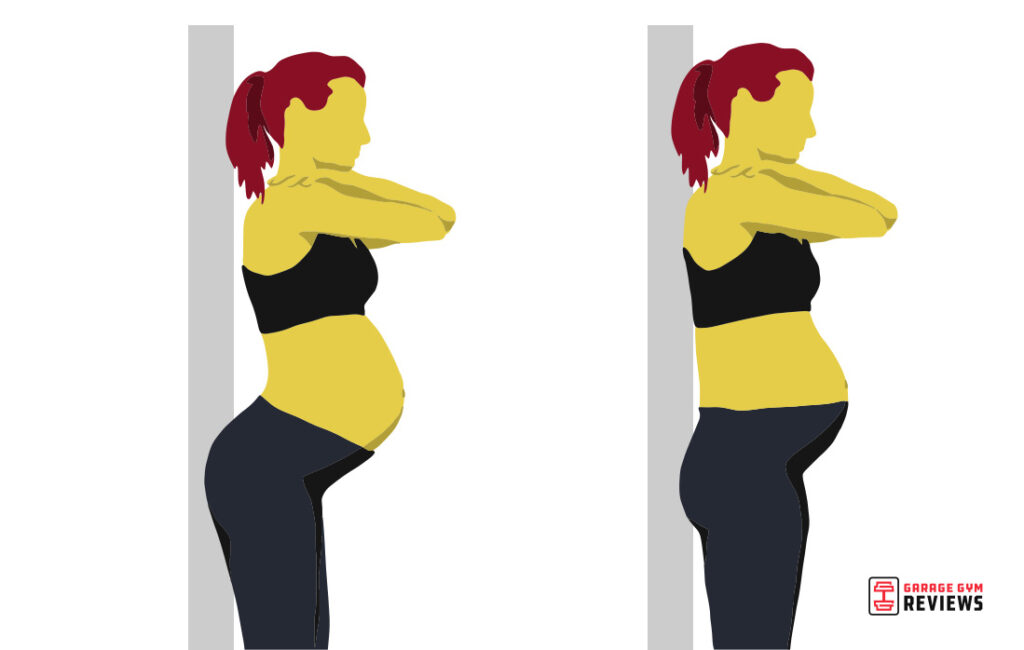
Wall Push-Ups
- Stand 18 to 24 inches from the wall, and place your hands on the wall with the hands in line with the shoulders.
- Keep a neutral spine (straight line from the top of the head to the heels of the feet), and slowly bring your body toward the wall, using your arms to control the push-up.
- Lightly touch your head to the wall.
- Push off the wall to complete one rep. Keep the elbows tucked against the body.
- Repeat for 3 sets of 10-15 reps.
Modifications: The further your feet are from the wall, the harder the push-ups will be.
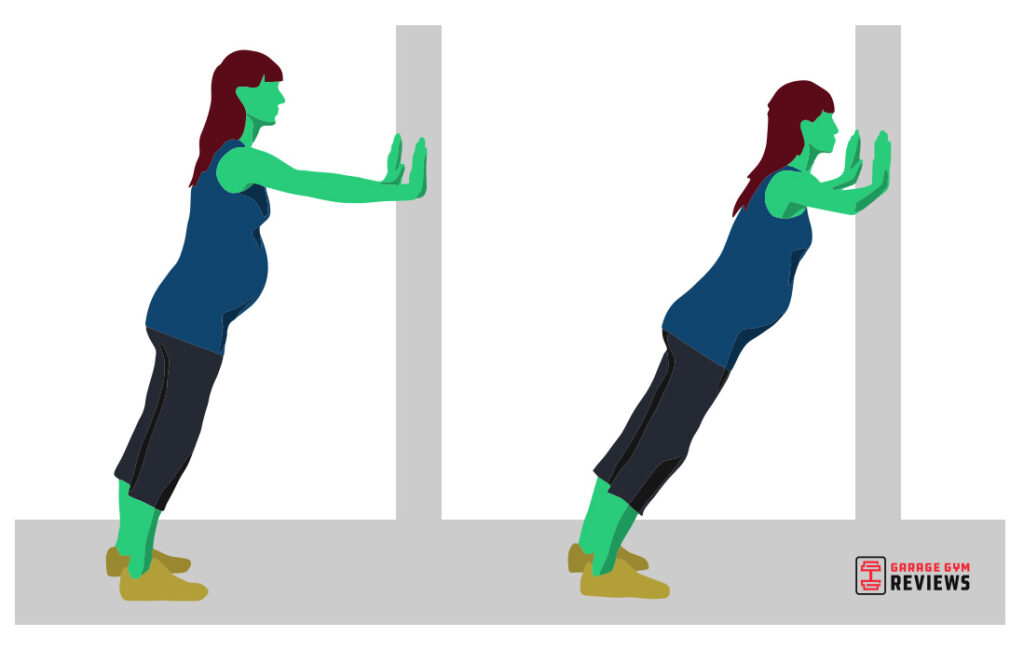
How Often Should You Exercise During Pregnancy?
The ACOG supports the 2018 U.S. Department of Health and Human Services Physical Activity Guidelines for Americans that recommends 150 minutes of moderate-intensity aerobic exercise per week. You’ll get the most benefit if you spread out your exercise to three to five days of the week.
Safety Tips
There are a lot of demands on your body during pregnancy. You can get your heart rate up, and you should get sweaty. But your body doesn’t withstand physical stress the way it does when you’re not pregnant, so keep these tips in mind.
- Fuel your body adequately. If you’re unsure how many calories you need, talk to your doctor.
- Drink water before, during, and after your workout to prevent dehydration.
- Avoid exercising in hot, humid weather where you could easily overheat.
- Avoid contact sports and exercises with quick movement changes or an increased risk of falling, like horseback riding.
- Skip exercises that twist at the waist.
- Don’t hold your breath, which can make you dizzy or lightheaded.
- Move slowly and carefully when getting up after floor exercises or trying new exercises.
- Lift weights that feel light or moderately heavy to you. Pregnancy isn’t the time to max out.
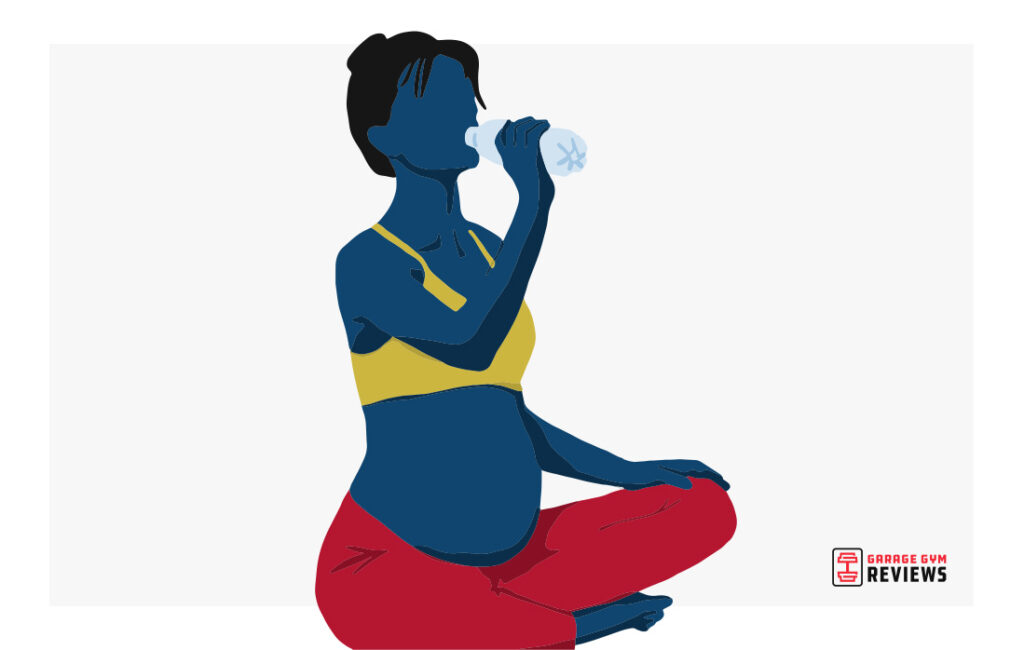
Watch for and stop exercising if you experience any of these warning signs:
- Dizziness or lightheadedness
- Vaginal bleeding
- Unusual pain
- Unusual shortness of breath
- Excessive sweating or fatigue
- Leaking vaginal fluid
- Contractions
- Chest pain
- Muscle cramps
Final Verdict On Exercise During Pregnancy
Exercise is definitely a go for pregnancy. It’s good for your mind and body and prepares you for the physical demands of labor and parenthood.
“Keeping active is a sure way to increase your chances of having a healthier pregnancy, baby, and recovery period. But it’s vital to listen to your body and be easy on yourself if you are feeling tired and unmotivated,” Rachel advises.
Any kind of movement counts, so if you prefer to dance, garden, or tackle big organization projects (hello nesting!) then do that instead.
Remember to:
- Do both cardio and strength training to balance out your fitness.
- Try to get 150 minutes of moderately intense exercise per week.
- Use your current fitness level to help you determine the right intensity and duration of your exercise sessions.
- Keep your body properly hydrated and fueled.
- Listen to your body!
FAQs About Exercise During Pregnancy
Which exercises should be avoided during pregnancy?
First, always listen to your body, and follow your healthcare provider’s recommendations. “In general, you can continue doing any activity you did before pregnancy in the early months, so long as it does not involve contact or put you at risk of falls, or involve high altitudes or underwater pressure,” says certified prenatal/postpartum coach Rachel MacPherson, .
A few exercises to watch out for include:
Using weights so heavy you feel abdominal or pelvic pressure or lose balance
Twisting motions that target the waist
Contact sports and activities with rapid movement changes
Any activity that could cause abdominal trauma like contact sports
Any exercise in heat or humidity that makes you feel lightheaded or have trouble breathing
When should I start exercising during pregnancy?
Start exercising at any time during pregnancy. Keep in mind that each trimester holds its own challenges. Morning sickness in the first trimester and the sheer size of your belly in the third trimester are just a couple of things that could get in the way. It’s always better to do something than nothing, even if you’re shy of 150 minutes a week.
What are the dos and don’ts of exercise during pregnancy?
First and foremost, listen to your body, and talk to your doctor because everyone is different. Then:
– Do exercise regularly.
– Do drink plenty of water before, during, and after exercise.
– Do both cardio and strength training.
– Do aim for 150 minutes of moderate-intensity exercise per week.
– Do be conscious of your changing center of gravity.
– Do remember to breathe while exercising.
– Do follow your doctor’s recommendations.
– Don’t skip exercise altogether.
– Don’t participate in activities or sports where you could experience abdominal trauma.
– Don’t participate in high-pressure, high-altitude, or jarring activities, like scuba diving, downhill skiing, or gymnastics.
– Don’t get too extreme, like too hot, too cold, lift too much weight, or exercise for too long.
What Signs During Exercise Mean Should I See a Doctor If I am pregnant?
You should see a doctor if you experience urine leakage during exercise accompanied by a heavy feeling in your perineum. Urine leakage is common, but if you experience it and a heavy feeling, it could indicate pelvic floor issues that should be addressed before you continue exercising.
Any pain, lightheadedness, nausea, or feeling unusual in any way means you should immediately stop exercising. See a doctor if it persists. It’s also important to let your doctor know if you notice any new or large veins or what appears to be clots.


